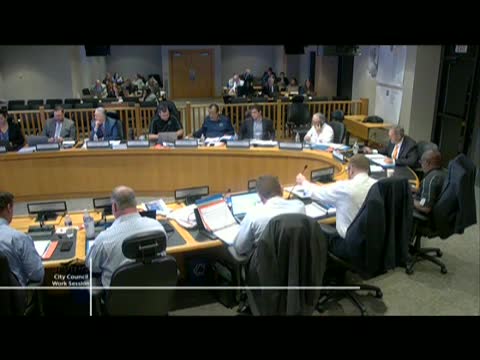Fire Department Chief Reveals Ambitious Plans for Future
June 27, 2024 | Irving, Dallas County, Texas

This article was created by AI summarizing key points discussed. AI makes mistakes, so for full details and context, please refer to the video of the full meeting. Please report any errors so we can fix them. Report an error »

During a recent government meeting, the fire department chief presented a comprehensive overview of the department's operations, achievements, and future needs, condensing a 175-slide presentation into a concise 15-slide format. The chief emphasized the department's mission to mitigate hazards to life and property while serving the community.
Key highlights included the department's structure, which comprises 416 authorized staff members, with 403 being sworn personnel. The chief reported that the dispatch center handled approximately 52,000 calls last year, with over 26,000 incidents recorded. Recruitment efforts have significantly increased, with attendance at entrance exams rising from 200 to over 600 in just one year, thanks to outreach at 40 job fairs and a robust social media campaign.
Performance metrics revealed that the fire prevention division conducted nearly 7,000 inspections to date, despite challenges posed by the COVID-19 pandemic and staffing shortages. The arson division reported a 56% case closure rate, exceeding the national average. The chief also highlighted the department's specialty teams, which have been deployed multiple times for various emergencies, including high-water rescues and hazardous material incidents.
The chief addressed the issue of response times, noting that while the department's average response time is currently below the National Fire Protection Association's (NFPA) standard, the property saved during incidents remains high, with $153.6 million reported last year. The department's CPR save rate stands at 28%, significantly above the national average.
Looking ahead, the chief outlined staffing and resource needs, including the anticipated arrival of new ambulances and the ongoing training of personnel to meet paramedic qualifications. The design phase for a new fire station, part of a bond package, is nearing completion, with plans to enhance community services and emergency response capabilities.
Overall, the meeting underscored the fire department's commitment to public safety, community engagement, and continuous improvement, while also addressing the challenges of staffing and resource allocation in the face of growing demands.
Key highlights included the department's structure, which comprises 416 authorized staff members, with 403 being sworn personnel. The chief reported that the dispatch center handled approximately 52,000 calls last year, with over 26,000 incidents recorded. Recruitment efforts have significantly increased, with attendance at entrance exams rising from 200 to over 600 in just one year, thanks to outreach at 40 job fairs and a robust social media campaign.
Performance metrics revealed that the fire prevention division conducted nearly 7,000 inspections to date, despite challenges posed by the COVID-19 pandemic and staffing shortages. The arson division reported a 56% case closure rate, exceeding the national average. The chief also highlighted the department's specialty teams, which have been deployed multiple times for various emergencies, including high-water rescues and hazardous material incidents.
The chief addressed the issue of response times, noting that while the department's average response time is currently below the National Fire Protection Association's (NFPA) standard, the property saved during incidents remains high, with $153.6 million reported last year. The department's CPR save rate stands at 28%, significantly above the national average.
Looking ahead, the chief outlined staffing and resource needs, including the anticipated arrival of new ambulances and the ongoing training of personnel to meet paramedic qualifications. The design phase for a new fire station, part of a bond package, is nearing completion, with plans to enhance community services and emergency response capabilities.
Overall, the meeting underscored the fire department's commitment to public safety, community engagement, and continuous improvement, while also addressing the challenges of staffing and resource allocation in the face of growing demands.
View full meeting
This article is based on a recent meeting—watch the full video and explore the complete transcript for deeper insights into the discussion.
View full meeting
